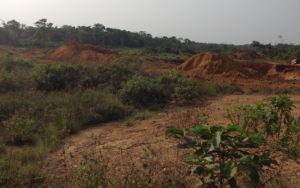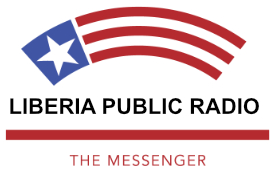
In an effort to sustainably manage the upper Guinea forest mainly in the Mano River Basin, conservation stakeholders in Liberia and Sierra Leone have begun a process to ensure the restoration of degraded land and lost forest cover in the region.
According to conservation experts, 84% of the upper Guinea Forest in West Africa has lost its original size due to human activities including mining and farming.
Originally, the Upper Guinean forest consisted of dense forest that covered an estimated 680,000 sq km according to a 2000 report.
They warned that if nothing is done to restore the forest cover especially the Gola forest between Liberia and Sierra Leone which holds the remaining forest and continues to be threatened, will have a serious climate change effect in the region.
The Gola Forest which stretches between Liberia and Sierra Leone is home to several endangered species including birds, mammals and reptiles as well as different trees species that have some high conservation values.
There have been several interventions by donors like the United States Agency for International Development (USAID), the European Union, (EU) and the World Bank to the Gola Forest to ensure that portion of the forest reserved and protected for the benefit of the two Mano River Union countries of Liberia and Sierra Leone.
Already, some portions of the Gola Forest both in Liberia and Sierra Leone have been legislated in 2016 and 2011 respectively as national parks measuring more than 100,000 hactares of landscapes.
Restoring the forest landscapes
In order to mitigate the situation especially around the greater Gola Forest landscape, United States Agency for International Development (USAID)-founded West Africa Biodiversity and Climate Change program (WABICC), concluded a two stakeholder workshop on mapping restoration opportunities in the Gola transboundary forest landscape between Liberia and Sierra Leone.

The mapping up would include using the Restoration Opportunity Assessment Methodology (ROAM), a framework developed by the International Union of Conservation of Nature (IUCN) and the World Resource Institute (WRI).
WABICC senior policy specialist Wale Adeleke said the workshop was aimed at drafting comprehensive framework gear towards restoring some portions of the forest which had be destroyed due to human pressure.
Mr. Adeleke said the initiative is to ensure that forests cover lost as a result of misuse are restored.
The forest landscape restoration, according to the WABICC Policy specialist is also targeting degraded forests around the Gola including the Foya proposed protected area in Lofa county, TY Island and the Kamboi Hill reserve near Kenema City in Sierra Leone.
The Greater Gola forest landscape which covers more than 100,000 hectares of forested lands between Sierra Leone and Liberia continues to be degraded; although efforts have been made to restore.
On the economic viability of the Gola forest, Mr. Adeleke asserted that restoring the Greater Gola Landscapes will greatly improve air quality for the local community and in return generate income from carbon stock for both governments of Sierra Leone and Liberia.
In addition to income from carbon stock, the intervention according to Mr. Adeleke, will improve water quality for the local communities and reduce the risk of water and airborne diseases.
A participant at the workshop, from Conservation Society of Sierra Leone (CSSL), George Ganda, for his part told Liberia Public Radio that huge portion of the greater Gola forest landscape has disappeared due to human activities and require urgent restoration intervention.
He disclosed that forest degradation is remains a serious issue in Sierra Leone like in Liberian side of the Gola landscape.

Mr. Ganda appealed to donor to increase their support towards forest landscape restoration to enable organization like CSSL to continually restore the forest canopy.
Road Access to boast conservation
Forestry Development Authority Managing Director Mike Doryen emphasized the importance for access to protected areas describing it as key to the restoration of forest landscape and conservation activities in Liberia.
Mr. Doryen said improve road connectivity to protected areas will enhance the free movement of conservationists to conduct research on the Country’s biodiversity.
He noted that the provision of road around National parks is also crucial to ecotourism.
The workshop organized by the West Africa Biodiversity and Climate Change (WABICC)Project was held in Tubmanburng, Bomi County few kilometers away from the Gola Forest National Park.






















Comments are closed.